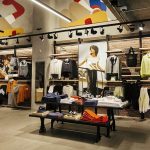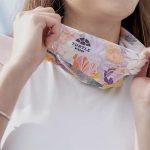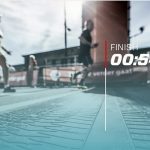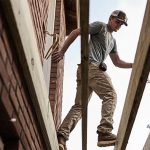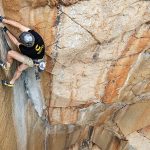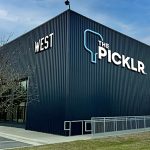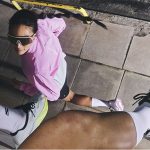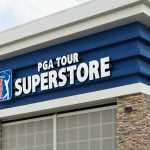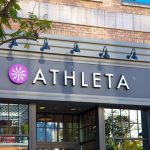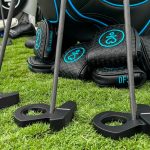Tighter inventories and stronger retail sales have led to improving margins for industry apparel and footwear vendors while the hardlines companies continued to lag the total industry numbers for the third quarter ended September. For those companies not reporting figures on a calendar year basis, we used the most recently reported quarterly data for each company when assembling the chart on page three.
Total industry sales for the companies tracked rose 10.9% while earnings for the group jumped nearly 80%, helped in large part to a $300 million swing to upside by Nike in their fiscal first quarter ended August 31, 2003. Even without the Nike gain, the industry saw profits increase at a rate roughly double the sales growth rate for the quarter. On another positive note, inventories for the total group rose just 6.0% at the end of quarter.
Each sector appeared have a few bad apples that spoiled the good news for their basket, but we have attempted to call out the responsible companies when they skewed the figures.
The hardlines sector again held back stronger profit gains even as the group saw profits move to the upside, reversing the second quarter decline of 4.1%. The group was hurt primarily by a major swing to a $3.7 million loss at Johnson Outdoors versus a $20.4 million profit in the year-ago period. Without the Johnson decline, profits in the sector would have actually increased 21.5% for the quarter.
Nautilus was the other major culprit here, with net icome declining almost 74% or $18.4 million. In fact, when we remove both JOUT and NLS from the numbers, we see profits in the hardlines sector jump 44.0% for the period. The other major profit decliners here on a percentage basis included Callaway, Fotoball and Variflex.
On the upside, it was Acushnet, Brunswick and Huffy that had the most impact, joined by Amer Group when income is measured in U.S. dollars. Net income at Amer Group, parent company to Wilson, Atomic, Precor and Suunto, was still up more than 46% in the companys reporting Euro currency, due to a favorable U.S. patent litigation case involving Precor and Brunswick's Life Fitness unit.
Revenue growth in the hardlines group was also impacted by Amers Precor unit that was not part of the company in the year-ago period. Amer would have seen a 8.9% sales decline for third quarter and a 32.1% drop in net profits if not for the Precor gains. The gains more than offset the big problems at Nautilus, where the 24% drop in revenues there is attributed primarily to the slowdown of its Bowflex machine in the consumer direct channel.
Acquisitions were also primarily responsible for K2s sales growth in Q3.
In apparel, profits outpaced sales by more than two full percentage points. Stronger profit growth in the sector was held back by sharp declines at Antigua, Everlast and Russell Corporation that were more than offset by nice gains at Columbia, Quiksilver, G-III and Gildan. The nice trend here was watching golf apparel companies Ashworth and Cutter 7 Buck swing into the black for the quarter. Still, the profit gains in the quarter were dwarfed by the huge 121% increase seen in the second quarter chart (SEW_0335).
Gross margin improvement was again a large factor here as a number of companies posted triple- and even quadruple-digit basis point gains. Inventories were also kept in check, leading to fewer closeout sales.
On the stock performance front, it was Columbia that led the pack at the end of November with a share price that hit its 52-week high last week, before settling back to just 0.2% shy of the new benchmark. COLM shares were up almost 88% from the 52-week low. Ironically, it is the strength of the companys footwear business that is seen driving the business of a company founded on apparel.
In footwear, it was Reebok establishing a new 52-week high as Nikes big profit swing helped push profits for the sector up more than 150%. The groups profit figures would have still been up 29.2% for he quarter without the Nike gain. The gains in Q3 easily outpaced the 19.9% growth seen in the second quarter. Aside from Nike, it was Reebok, K-Swiss and an exchange-rate-aided adidas and Puma that drove the profit increase for the sector in Q3.
adidas profits grew 14.4% in Euros, while Puma still saw a 104.4% jump in earnings when measured in Euros. Puma also led the sector in gross margin growth, due in large part to increased apparel sales as a percentage of total business.
The downers in the sector again consisted of Skechers, swinging to a loss of $5.9 million after posting $14.1 million in earnings in last years Q3. The performance is a return engagement of the companys weaker Q2 results and signals continued issues with inventories that are closed out at ever lower prices, heavily impacting the gross margin numbers.
Vans, which had been a drag in second quarter, turned it around nicely in Q3, posting a 22% increase in profits for the quarter, primarily from its improving owned-retail business and the divesture of the skatepark businesses.
On the revenue column, it was again Puma near the top of the pack, with sales increasing 37.8% when measured in Euros. K-Swiss maintained its industry darling status, gaining the most on a reporting currency basis. Deckers was not far behind as both companies continued to post nice gains in the U.S. market. Nike and Reebok both saw their increases come from benefits from currency exchange rates and licensed apparel sales, with Reebok making more strides in the all-important U.S. athletic specialty channel in footwear as well. On a currency-neutral basis, Reebok still grew 10.3% during the quarter, while Nike saw its U.S. and European businesses decline 2.0% on a currency-neutral basis. We expect to see a shift in dollars — and share — in the current quarter as Nike opens the gates to more product at Foot Locker and licensed apparel starts to reach a saturation point in the mall.


